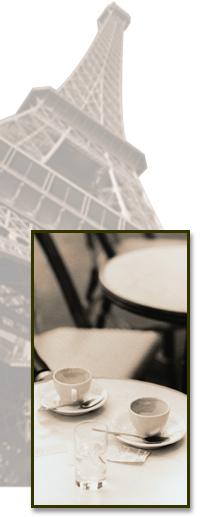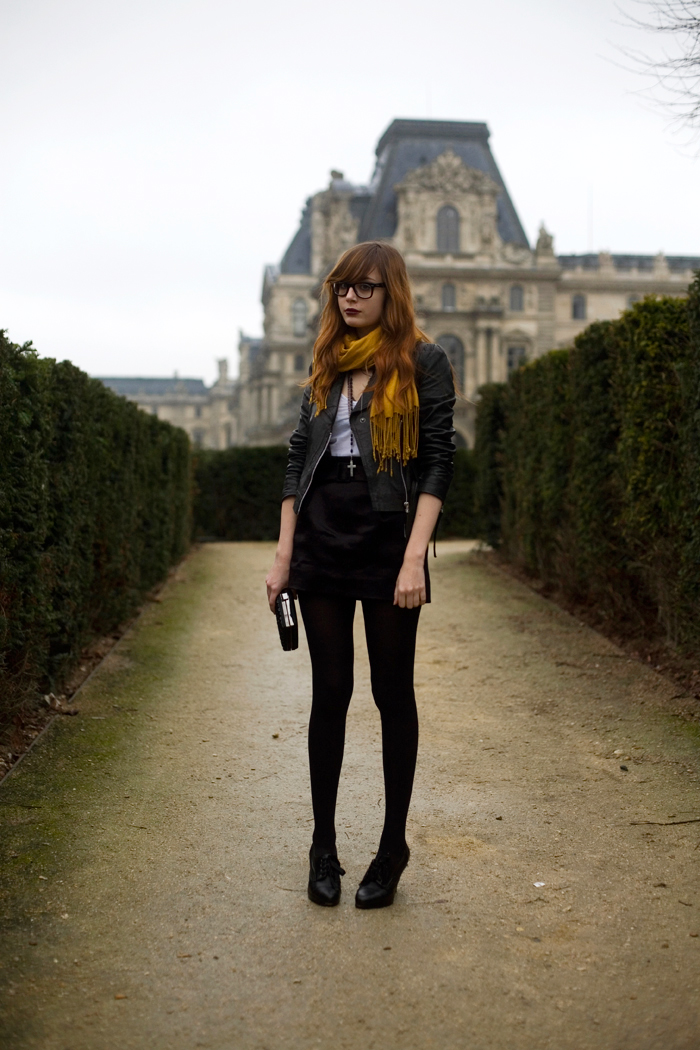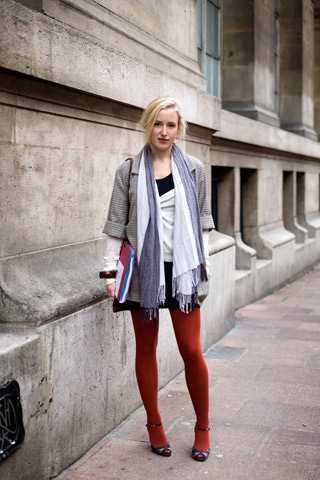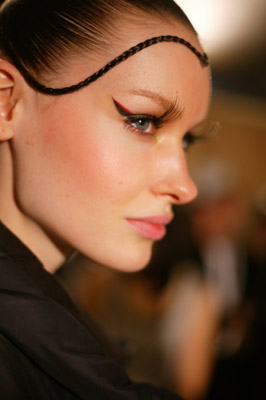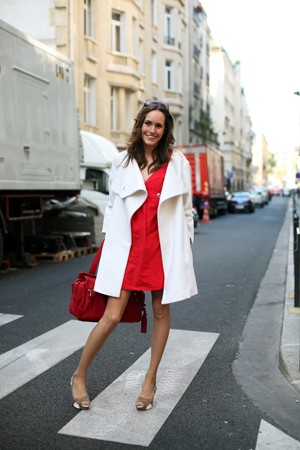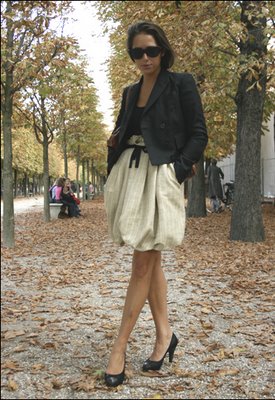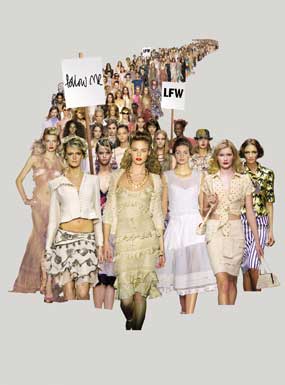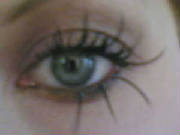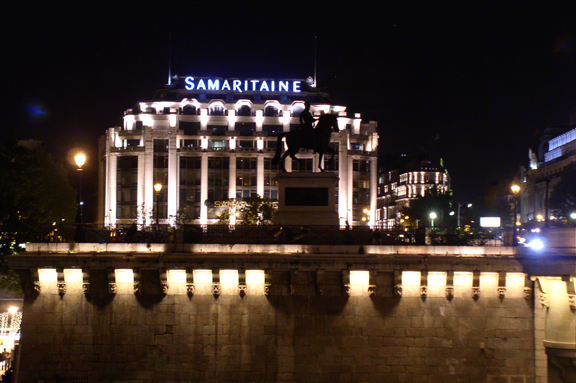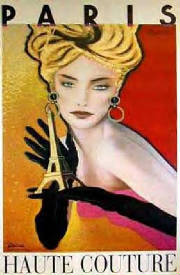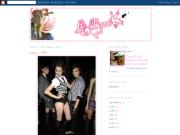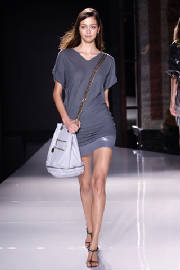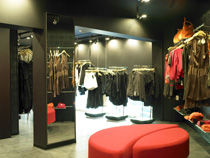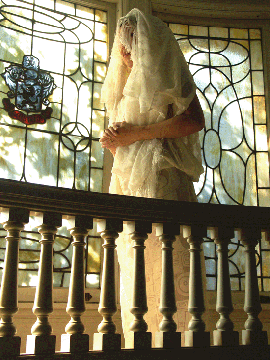 |
 |
 |
Paris, France Fashion Houses
Cacharel --- Paris - +33 (1) 42 68 38 88 bags, shoes, scarves, fragrance,
glasses, jewelery, lingerie, watches, swimwear, home linen, art of entertaining.
|
|
|
 |
 |
The Asian challenge Yamamto - Kenzo [ WebPage ]
International Cultural Fiesta Movement
- The Culture of Fashions [ WebSite ]
Supporting Links:
 New Fashions New Fashions
Introduction: During this age of post feminism European Fashion designers are pushing the
envelope by introducing topless fashion designs on the leading fashion run ways in Paris, Milian, Madrid, and others. Moreover,
there is an opposite movement in the retros in which the thing is to out do the designers of the 40s and 50s. This
is in reaction of a growing shift in the nightlife in key Europan cities in which women are finding safer environments from
which to find personal release, and topless is gowing. In Paris, Berlin, Bonn, Caan, and Madrid free open tops of early 2004
have given way to mild see through topless causuals personally crafted. Moreover, increasingly at more and more plush parities
given by the Euro Dollar - New Rich, the topless look is growing. All reflect both growing safety women are now experiencing,
and the implications and self-realization of ones own rights personal taste and social fantasies. European designers who are
trying the catch up are still unknown. Increasingly, the binding of bra staps, and the constant irritations felt in sudden
body turns during social dancing, especially in the new moves provided by the Hip Hop culture is suddenly loss by the freedom
now being opted for. In one email, Rene Litz from Caan commented " That women covering their tops were really not natural
for a womyn's body. It was a condition impossed by males who feared women assuming power during the early development of European
civiliations which sought her exploitation. She has always questioned in her life ..Why the part that produced milk for innocent
children? ." With this in mind, a really discussion needs to be look at and properly reacted to. The key factor of
which is thesocial movements developed by every University and College activist feminist group who push the Take Back the
Night Campaigns both and off their respected campus. Especially at the Unversity of Rochester's Feminst's Coalitions, when
the success of this campaign during the 1970s triggered topless yearly demonstrations in down town Rochester to promote legislation
in Albany to allow women who so chose can go topless-which was subsequently passed. There is a proposal for a parade now being
discussed. The one time increasing incidents of sexual assault and rape closely and academically examined in depth
during the 70s and 80s made a dramatic down turn since the late 90s. Howover, though similar trends ocurred in Eruope, Anmerican
women did not respond in the same manner as did the Europeans. All of which caused the need to fully examine this aspect,
in as much as style and fashions are outward expressions of the social and cultural conditions which exist in ones time and
era. The website Fashions Trendsetters / Trend Setters was specifically developed and put together to gain wider attention, and this forum is where the answers should be examined.
I once trought of developing my own forum, but instead I found this one which already existed. What should be looked
at from my point of view is simple this. Is the nightlife coming up to par with the early feminist aspirations which
created The Take Back The Night campaigns of the 70s ? As per the course Introduction to Womyn Studies, State University
College at Buffalo, the resolve that a womyn's breast is not a sex object, why we still have this puritanical point of view
while Europe in increasingly rejecting this ? What are the clear implications to creative style features in American
fashions once some of the base issues become clearer? And more impportantly, which American city is going to take the first
step ? All the while this is going on why are retros assuming a permenant and at times growing marketing nitches? Lastly,
in the past advant of AID's destroying the leadership of American fashions during the 1980 - 1990, quess who is filling in
the void, and where did they get their initial experiences ? Victoria Secret ? Wicked Fashions ? With the once dominate
Europeans now being overshaddowed by Asian dominance, especially from Tokyo, and the growing power of MySpace.com and other
groups related groups and blogs, we are on the verge of new era of fashion who are smiliarly looking at these issues. They
plus other monitored internet groups, especially those sponsored by MSN, and Yahoo for free cl;early indicates a growing shift
to what the Europeans are doing. In addition. in every advocate rape and sexual program nation wide, " What a women wears
is not any grounds for violation, or any question concerning her integrity, but is solely her own right to do so." Anti -
Rape Task Force, State University of New York at Buffalio, University of Buffalo. These two elements are converging and is
it how and when which the more serious discussions show be focused. Also, and reports which are trace'able concerning this
topic should likewise be added. Mr. Roger M. Christian
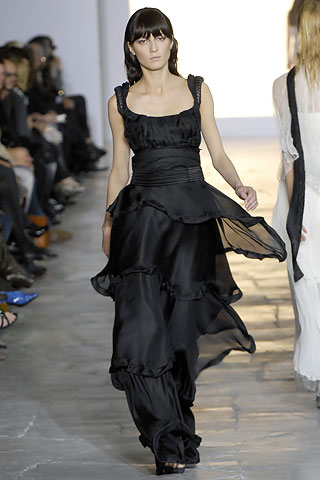
Chapter One:
Eight Part Series:
Styles, fashions, trendsetters, and what women are wearing represents one of the
most interesting - fascinating chapters in human creative behaviors. The great depth, and the powerful creative imaginations
necessary to maintain independence of styles are depicted on several fashion runways of the eight major fashions capitals
of the world, and countless other communities.
This has always caught my attention, and not only from the male appreciative admiration
of the beautiful female fashions models. More directly from the perspective of the very nimble minds and even harder efforts
to make reality what the mind is attempting to produce - which went behind each design.
None the less, it is the importance of this one behavior in which an idenity is derived, and
how a society wishes to represent itself which links every other culture to others in a central commonality to produce beauty.
Looking at the present culture of fashions, haute couture, and the importance of its presence within society one has
to first look at the foundations of the modern prototypical promotion of the fashions industry. Yes, and if you really
do not know already means I will be writing about Paris, France. Yet one historic personality whose contribution to fashions
is little known by most.
King Louis XIV.
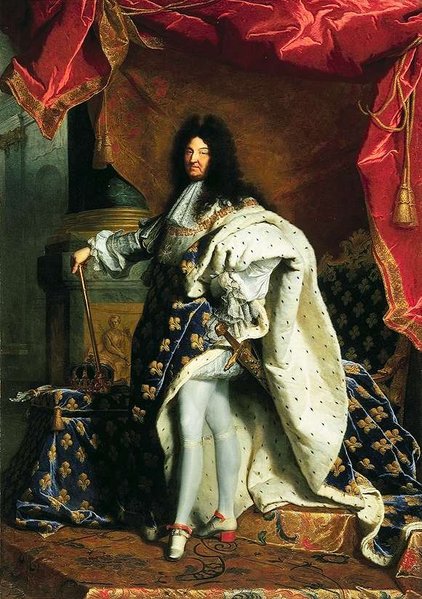
The secret to King Louis XIV efforts to centralized power to the crown of the French monarchy from the nobles,
who owned most of the territory of France outright, was based upon one clear objective. To entice their egos from
which to eventually seduce them first into Paris, and then to create their dependency upon his crown. France was
still coming out of bitter sectarian conflicts which weaken France itself to Spain, and the English trading shipping
interests were likewise not helping either. Nonetheless, France had already established the first Universal institutions
of higher education through the establishment of the Isle de France, giving France the highest educated population in
Europe, and was since the eight century known as " THE " trendsetter in what people wore in Europe.
Something which really irked Italians all the time-even today.
About that time dance was coming of its age - though play for children, and era. The additional
aspect, and in the conceptual frame behind the scenes, French political behaviorisms of this era, court jesters
were known for their usage to smear a foe in public by their royal sponsors ever so delicately couched behind the
role and ruse of comedy. Yet King Louis needed something in which to modify the noble's behaviors into role
functionaries to the pomp and circumstance of his envisioned central royal court culture of The Versailles
Palace and it's emerging adjacent community - likewise developed by Louis - where everyone who was someone, personally selected
by his crown officals, were likewise to move to from Paris.
L' ballet entered into the picture as the prolific behavioral central ruse. What an idea, lets act out in
full public view what he wanted French society rules to become, through its class of nobles first. Then, and most important,
how they are to behave in his royal court. This was included in the various choreographies of dance performance
right their in the open public - while at the sametime they, the very same nobles, having to pay the money for the
performances themselves.
Then in the twist and turn of his own and very nimble genius came the even more brilliant additional idea
- behind the pomp and circumstance contained in his vision. He was to create, and to further inspire very,
very, very expensive fashion styles for the French nobility. Selected coutures were invited to his Parisian court
carrying the ordered most expensive fabrics and accessories they had, and he showed them how to modify their designs
and told how he would help them make a lot of money at the sametime. He knew this meant that lots of money was
going to be spent by the nobles.
The central themes on all going promotionals are ....
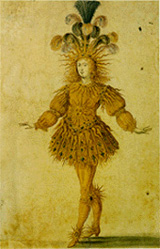
The Sun King.
Creativity was immediately fused in the ongoing development, and organizations in his various
ballets, The Sun King, and Louis needed terms in order to train what he wanted other dancers to do in the performances.
Thus we have the ballet terminologies of today as a direct result of his additional creative efforts. More importantly these
events created the ballet arts as dance genre internationally and were followed up later by establishment of
The Paris Opera House - which institutionalized what Louis envisioned in dance. Then he established the Court Post of '
Haute Couture '. This meant the ' Royal Counts of French Nobles ' had to have one too! Other royals assisted in
creating commercial fashion houses. It was in the evolution of these fashion houses that fashions had to be more creative,
along with what Louis had inspired, and thus the first golden age of European fashions emerged as a result during
this era.
As a side note: In Italy, though they were the European main spring of ballet from Chinese
origins, was taking to opera at this time in which they have had the cultural lead Internationally ever since. For them,
it was a good trade off.
Thus during this cultural new development, Paris was electric'fied. The ' Court of Louis XIV ' became
sought after by younger landed nobles or their sons and daughters who upon arrival upon this culturally awsome scene
found out they were not properly attired, and several of their females companions were highly embarrassed outright in the
first years of this social French development. Money really flowed into the Parisian couture's pockets who a couple years
earlier were begging for bread. More importantly other nobles through out Europe who could " afford it " made their
seasonal ( This, likewise, was the new rage through out European youth nobles too! ) trips to Paris, and then
Versailles too - real upper class only tourist trade sprung out of this time. So everyone had to start paying attention to
what they were wearing, and it is here where Louis genius really struct pay-dirt, and very litterally too! It cost a
lot more money, inflation kept up with blooming egos of the nobles to get properly attired, and the younger of the
noble classes, and not knowing better either, really went on wild spending sprees, rushed several notes back home asking
for more and more money. Also at this time the tabacco habit struck at this time. Then came their parents, and
who, then seeing whats was really going on, were likewise seduced!
Excitment and celebrations were everywhere, and everyone wanted to forget the ole sectarian riffs which
just a few years ago existed in France - so a National means of escape was achived at the sametime. Louis had fashioned
his central cultural distraction while his eyes look upon himself becoming the military and political master of all Europe
everytime time he saw a European map. This was his goal in the first place.
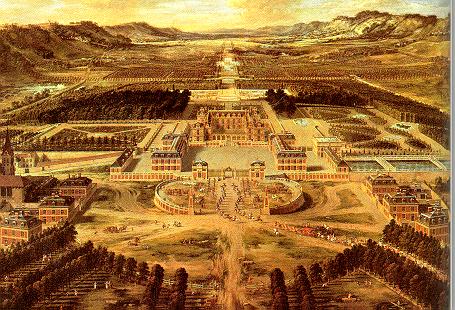
We're talking about cost, in todays terms, for male court fashions at around $ 5,000.00,
and female $ 15,000.00 and the jewlry was going as high as $ 500,000.00 - all being supplied and crafted by the
emerging middle class of Paris itself. Then as the opening of The Sun King Ballet staring as the first " historic
" male principal dancer King Louis XIV himself, tights and all, the ruse, or resulting behavior modification was
sprung upon the French nobles....
Here is how these promotionals went...
First... Came advance notification of the play bills / invitations and promotions, as well
as the dessemination of story - rumor mills by selected court officals to instigate gossip which
went on about what was meant by proper dress only, was also part of this new very lavish social function.
Why?
Ballet was considered then by French youth as EXTREME ( Very much like the Moon Walk was during the
80s ), and AWSOME, and Culturally Revolutionary ( the Hip Hop of its day ). Everyone wanted in, especially
when it gave you an ' in ' to the new class distinctions being created at the sametime ( It was also at this point
in French history which began the causal factor which was to become the bloody French Revolution, as the nobels became
further distracted while in Paris from the peoples plight of resulting poverty of their various fiefs. ). Remember the quip of ' Court Jesters' a subtile means to attack someone else in public attendence, well
Louis was going to have ballet to modify French behavior towards him.
How?
Previous to each performance everyone was properly introduced by the Standard, the guy with the long pole
bejewled at the top who would stomp it on the polished marble floor generating very loud and distinct echoing stomps to get total
public attention. At the entrance everyone heads truned to see each noble and his lady who were being assured by everyones noble
nods signifying that their fashions were individually and thus socially approved. Both men and women were all dressed
up in the finest silken lace ' money ' could provide. The hook ... Another-words everyone was being paraded for approval.
This was deliberately staged too! Court Jesters? Hmmmm... The class behavior he was creating was that
everyone was to be seen, and in this staged cultural genre the noble's egos ballooned as a result. It was here, the
noble's resulting emotional vulnerability, that he finally had them on a path to be socioculturally seduced and
politically exploited. Then at the ballet itself, they were completely taken by surprise by his deliberate highly
sensual grace of his movements, even more so there were females in the
audience who were in complete sexual rapture. Faintings suddenly occured.
This went completely sexually noticed by the more younger males of the nobles
all done upon in their extreme lace and wigs, and knew if they were to be noticed by the opposite
sex, they better take a lesson from Louis who was demonstrating what court behavior was going to be. SENSUAL and SENSUALLY DRESSED!

Then after the performance was to be followed by a reception. This meant a change in dressings, and
everyone went to where they could get changed. That meant more money was to be spent, including additional rentals,
or construction of Parisian, then Versailles villas, the new chateaus were like palaces themselves, and more of
the wealth to pay for this came from the provinces as most of the money in France started to flow into Paris and not
Madrid.
Additional extreme promotions of the new French culture envisioned by Louis were also instituted,
IE. more tasty French Pastries - they hired the best from Vienna, all expensive, and soon even the older - who should
have been more wiser - Counts of the French monarachy were likewise seduced as mistresses became likewise a public social
normal discourse at the sametime-promoted again by Louis. The French Cardinal was likewise busy, and thus no immorality
statements were ever made or even involvement in French culture. This created a vast and an expansive fashions industry
and from which a very strong French middle class was established and all who knew their loyality was with the king - who
gave them this opportunity of wealth. Then Louis objective was absolutely immediate, and from the outset became
very clear, and that is to tax them, and from which he was able to have the money to establish a professional army. Then navy.
Later came his adventures in the Netherlands. Even in some of the battles in which he commanded
his troops, he brought both his wife and mistress hand in hand with a selected group of nobles to see his heroic
deeds in action. He himself got hook on needing an audience. A real show off!
In 16 years the landed nobles had started to incur great debths, some had lost everything within a few years, and
had to ask Louis for help from time to time, and soon after centralized political and military power was in his hands, and
foreign colonies were likewise being established to create the economic multiplier from royal investments to increase the
wealth of France; this paid for his navy.
The French Civilization ever since always maintained this cultural cross nitting of dependent cycles until
another genius appeared and that was Chanel Coco. She's Chapter Two! Hint
she made it more of a Womyn's industry. Even with a tip for tat cross dressings. More importantly. she broke this dependency
cycle and fashions assumed more cultural independence as a result. None the less, and along with his additional efforts,
King Louis XIV's influence is behind every lace, sense of pagentry on the various fashions runways all over the world,
all still getting their cadence and characteristics from The Sun King.
|
Gabrielle Coco Chanel |
 |
 |
 |
|
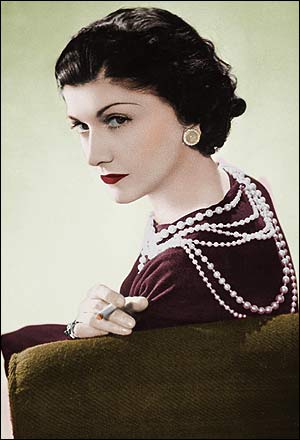
The traditional R.K.O. ( Movie ) Theatre building on 14th street and New York Avenue, Washington, D.C. second floor
windows which then housed Arthur Murray Dance Studios - glazed reflecting the afternoon sun's rays. We sat in the second
floor manager's office listening on how as Arthur Murray Dance Instructors, since the mainstay of the business
services female clients, we must know something about female taste in styles, and high profile fashions, and here
I was first intorduced to " Coco " as she was called. Moreover, and as the sales female trainer lifted her
head proudly and dominating with her lovely graceful stature, greatly dignified by her years and experiences over the decades in
teaching and managing, she made sure that the popularity of female pants suits, or cross dressing, and loose wear
fashions did not come from Yves Saint Laurent [ Her feminist ideals resented his exploitation of her
contribution as being his own innovations.], but in very bold revolutionary move from Chanel herself
decades before. This histroic cross dressing step foward move destroyed the corset and capsulated the very cultural
avant garde fringe [ Inclusive of early free love European expressions surrounding the sociocultural
ethos of the West Bank of Paris, France. ] of the early feminist movement.
I was greatly caught in aw by her central beauty as looked through protraits of her found in Washington, D.C. during
the Summer of 1969.
This was my second period of Womyn Studies as well.
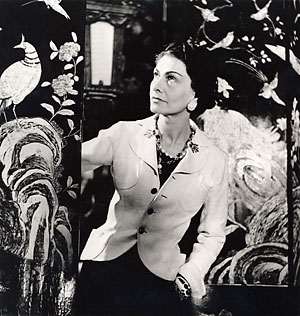
Gabrielle Bonheur Chanel
Full name.
Gabrielle was brought into the world in the lovely
French community of Saumur, France, 19 August 1883. Following the early French tradition for most females of the time who
were not not from the upper classes,[ Coco Chanel's personal life was tragic, beginning with the death of her mother and abandonment
by her father by the time she was 12. At 17, she moved to an orphanage run by nuns.] she was educated at the convent's
orphanage Aubazine, 1895-1900; then later at theconvent school at Moulins -1900-02. Upon her accounts to her friends
later she did quite well. Though they really had the watch and disipline her all the time. She grew in the softness
of real strength and self-convictions as well, and her head was always turned to masculine strength by men had a force of
character.
Did she want have their force of character which allow those who she saw was able to dominate with
a very distinct presents in any room or hall once they entered?
Her self focus happen as a consequence of working as a clerk at the Au Sans Pareil
hosiery shop, Moulins, 1902-04. Here she started to question, as many other younger females of France of the time were always
complaining how the wale bones within their corset were very uncomfortable, and that they felt they were about to faint if
they tried to bend over quickly to pick up something which they just droped. Other complaints were likewise being discussed
- as their journals of the times have indicated which mentioned the unmentionable when they had to releave themselves - its
was cumbersome in dealing with clothing layers. This was a growing yet hidden concern which grew during various heat waves
under the Summer conditions of Pre WWI France itself.
Gabrielle had a personality as well and needed creative outlets. Aorund the historic
bend of her time and era a name was awaiting her. Someone droped a name of Coco a year earlier while looking into
her eyes and she kept this in her imagination and growing self-image. She became a café-concert singer, finally
using nickname "Coco," openlly in Moulins and Vichy, Her life grew richer, her beauty grew in attractive stature, and
she discovered what she also liked in those she was seen with and made careful critical choices as well as who. She
discovered what power was.
1905-08 her real first venture in adventure lover began while she lived with Etienne Balsan, Château de
Royalieu and in Paris. Nonetheless, her earlier uinderstanding of female fashion concerns were given a baisis betweem 1908-09;
as first as stage costume designer and grew form the experience of what stich went where and colorization.
In 1909, Gabrielle Chanel opened a small shop on the ground floor of the Balsan's apartment
in Paris - the beginnings of what would later become one of the greatest fashion empires in the world.
During her pre-war era, Chanel met up with Arthur "Boy" Capel, whom she soon fell in love with. With his assistance,
Chanel was able to acquire the property and financial backing to open her second millinery shop in Brittany, France. Her hats
were worn by celebrated French actresses, which helped to establish her reputation. In 1913, Chanel introduced women’s
sportswear at her new boutique in Deauville, in the Rue Gounaut-Biron; Marthe, Countess de Gounaut-Biron (daughter of American
diplomat, John George Alexander Leishman), was Chanel's first aristocratic client. Her third shop and successor to her biggest
store in France was located in Deauville France, where more women during the World War I era came to realize that women
were supposed to dress for themselves and not their men.
| The
Revolution" Little Black Dress " |
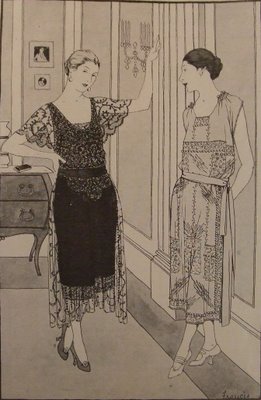
|
| From:
The 1000 fragrances Blog. |
The Revolution:
Once established in Paris Coco Chanel was very influential on the fashion scene. In addition to the bobbed hairstyle
and the unisex style of dressing, she introduced the "little black dress," the use of clingy knits, slacks (in her own wardrobe)
and women's bathing suits. Women world wide were about to be released to fully take the plung.
Chanel introduced a bathing suit made out of lightweight, clingy jersey; it still had long sleeves, extended past the knees,
and was covered by a long skirt. This sounds like plenty of coverage to us now, but back then the suit caused quite a stir...and
a fair share of scandal - pre World War I.
After the great social and cultural rebound after WWI, and the additional need for France itself to be healed - where most
of the war was conducted, Coco Chanel was ready.
The real consequnce which Coco Chanel had wasn't just ahead of her time. She was always pushing herself from hidden secrets
of her own drives and was always ahead of herself. Most fahsion observers and editorial boards when they take looks
at the work of contemporary fashion designers as different from one another as Tom Ford, Ralph Lauren, Helmut Lang, Yves Saint Laurent, Miuccia Prada, Jil Sander and Donatella Versace, they
have noted what they see that many of their strategies echo what Chanel once did. The way, 75 years ago, she mixed up
the vocabulary of male and female clothes and created fashion that offered the wearer a feeling of hidden luxury rather than
ostentation are just two examples of how her taste and sense of style overlap with today's fashion.
Chanel, her snsual self could not have defined herself as a feminist — in fact, she consistently spoke of femininity
drives behind her will to design rather than of any public discourse in the support of feminism. She realized that the
character behind design concepts of her times had to be feminine centered instead of securing male expectations of women of
her time and era. She was fighting male dominance in the fashions industry, and the consequences in which women had
to indure as a result - the resulting negative health aspects as well. Thus " The Littel Black Dress," became the most
significant fashions statement in which she allow the latent feelings which women of this time and era felt were allow a voice
through her own sociocultural leadership. Between her instincts of really liking males and her awareness of the loss of expectations
and aspirations French women suffered meant she had to cross over a very real barrier. Thus female fashions had to reflect
feamle sensual consiousness of body, spirit, and sexuality. What most have not really understood is that she knew men
would simply fall more in love with this revolution image now being seen on the streets, in the churches, and at nightlife
ethos..
This meant that comfort, and personal reflections to enjoy ones own body and to add grace to its forms with more relaxing
design to fit physical form and activity, personalized colorizations [ The female equal to
a male coat of arms ], and florishes [ Being lacy. ] must be designed
to fulfill. Yet her work is unquestionably part of the liberation of women. She threw out a life jacket - the corset, as it
were, to women not once but twice, during two distinct periods decades apart: the 1920s and the '50s. She not only appropriated
styles, fabrics and articles of clothing that were worn by men but also, beginning with how she dressed herself, appropriated
sports clothes as part of the language of fashion. One can see how her style evolved out of necessity and defiance. She couldn't
afford the fashionable clothes of the period — so she rejected them and made her own, using, say, the sports jackets
and ties that were everyday male attire around the racetrack, where she was climbing her first social ladders. This
was the key in as much as their cost fit the average purse - which she likewised design. She litterally dressed every
women by understanding the key is comfort, but being sexy [ What was a woman's definition of being sexy
instead of male definition. ] at the sametime.
She told top the world
" This is who we are."
" The Little Black Dress "
Everyone women has had at least one in their lives.
| Hepburn - Coco original - Movie Sabrina |
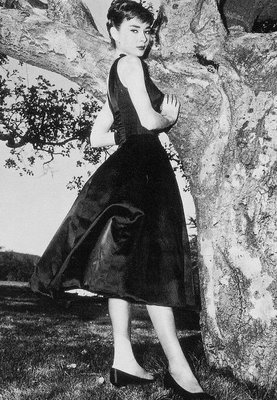
|
| The Ghetto Fashionista Blog |
| Chanel
Iman following the tradition. |
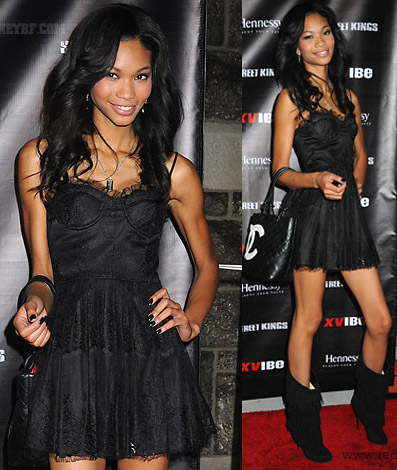
|
| Frappelattes
website |
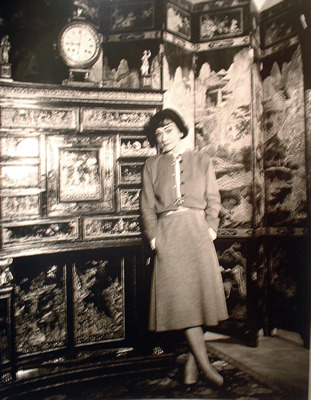
It was in Biarritz 1916; fragrance, No. 5 was envisioned, marketed from 1921. She was a leading influence
as a film costume designer, and Edit Head was always following her trail as well; this was also apparent when actresses
like Audrey Hepburn, Betty Davis, and Myrna Loyd was always asking for her. Her stylized dominace still exists
- ven on Bollywood ( India's Hollywood ).
She was exiled to Lausanne for affair with Nazi officer[ This fascet is now being looked at.],
Between 1945-53; rue Cambon headquarters reopened and first post-war showing,
Additional notes and acolades have been coming and the list includes:
Broadway musical Coco, starring Katherine Hepburn debuted on Broadway, 1969; company continued after Chanel's
death in 1971.
Ready-to-wear introduced from her fashion house 1977.
Karl Lagerfeld was brought in as designer for couture in1983. Lagerfeld took over ready-to-wear,
1984; gun manufacturer Holland & Holland acquired, 1996; French beachwear company Eres pruchased, 1997; one licensing
agreement with Luxxotica for eyewear. Other fragrances include No. 22, 1921, Cuir de Russie, 1924, No. 19,
1970, and from the House of Chanel, Cristalle, 1974, Coco, 1984, Egoïste for men, 1990, Allure,
1996, and Allure Homme, 1998; launch of Precision skincare line, 1999; introduced line of his-and-hers watches,
2000. Exhibitions: Les Grands Couturiers Parisiens 1910-1939, Musée du Costume, Paris, 1965; Fashion: An Anthology,
Victoria & Albert Museum, London, 1971; The Tens, Twenties & Thirties, Metropolitan Museum of Art, New York,
1977; Folies de dentelles: Balenciaga, Cardin, Chanel, Dior…Exposition du 24 juin au octobre 2000, Musée des
Beaux-Arts et de la dentelle, 2000. Awards: Neiman Marcus award, Dallas, 1957; Sunday Times International Fashion award,
London, 1963. Died: 10 January 1971, in Paris. Company Address: 29-31 rue Cambon, 75001 Paris, France. |
|
